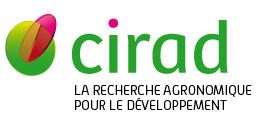Physiological analysis of salt stress behaviour of citrus species and genera: Low chloride accumulation as an indicator of salt tolerance
Hussain S., Luro F., Costantino G., Ollitrault P., Morillon R.. 2012. South African Journal of Botany, 81 : p. 103-112.
Tolerant citrus rootstocks are defined as Cl? excluders. However, little is known about the salt tolerance of cultivars used as scions, particularly the tolerance of monoembryonic citrus genotypes. To enhance the genetic resources for generating improved hybrid rootstocks, the evaluation of large samples of citrus species, including both monoembryonic and polyembryonic genotypes, is necessary. In this study, 12 citrus genotypes representing the major Citrus species and all the three genera of the Rutaceae family were subjected to moderate salt stress (75 mM) for 12 weeks to characterise their physiological response to salt stress. Various symptoms and physiological parameters were evaluated to characterise their salt sensitivity. These included plant growth (stem diameter), leaf chlorophyll content, leaf flavonoid content, maximum quantum yield of PSII [(Fm ? F0) / Fm)], net photosynthesis, stomatal conductance and leaf Na+ and Cl? contents. The results clearly demonstrated that the most salt sensitive genotypes accumulated high concentrations of Na+ and Cl? and maintained a fair growth and photosynthetic rate. By contrast, salt-tolerant genotypes accumulated less Na+ and Cl? and decreased their growth and gas exchange. Poncire commun citron and Marumi kumquat were the most sensitive species, while mandarins, pummelo and Australian sour orange were the most tolerant species. Among the genotypes, Engedi pummelo presented a specific trait for salt tolerance that has not been previously reported. Taken together, the results suggest that low leaf chloride content can be used as an indicator of salt stress tolerance in citrus genotypes. Exploitation of this indicator will enable the improved evaluation of citrus genetic resources and should lead to the identification of new sources of tolerance for rootstock breeding.
Mots-clÃĐs : citrus; stress osmotique; porte greffe; tolÃĐrance au sel; chlorure; feuille; indicateur biologique; gÃĐnotype; physiologie vÃĐgÃĐtale; mÃĐcanisme de dÃĐfense cellulaire; taux de croissance; photosynthÃĻse; rutaceae; france
Documents associÃĐs
Article (a-revue à facteur d'impact)
Agents Cirad, auteurs de cette publication :
- Morillon RaphaÃŦl — Bios / UMR AGAP
- Ollitrault Patrick — Bios / UMR AGAP
